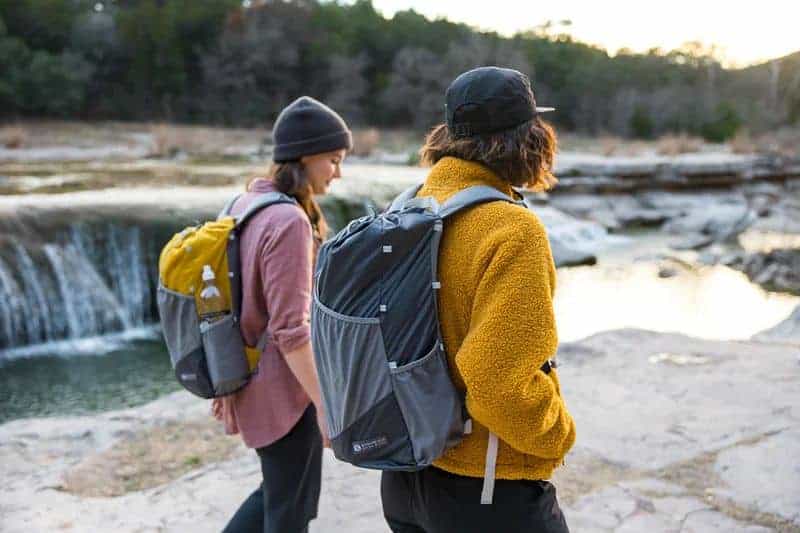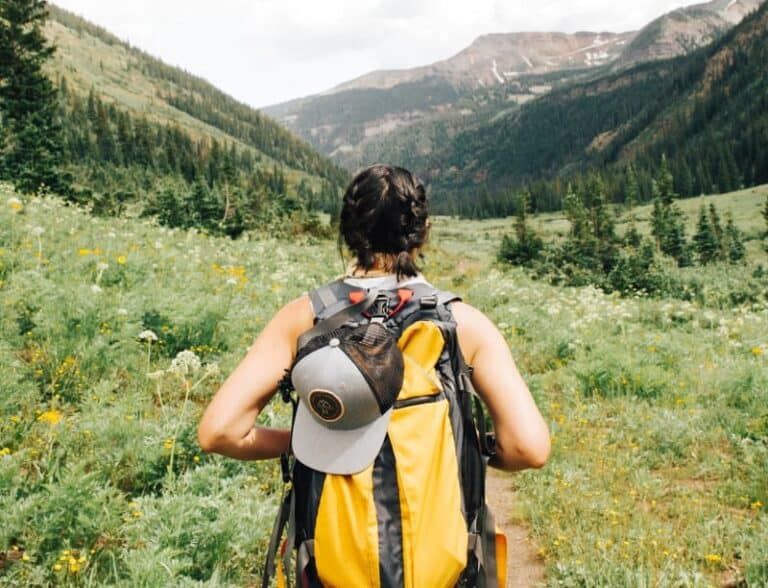10 Ultralight Backpacking Gear Alternatives
In this article we will discuss some ultralight backpacking gear alternatives. Maybe it’s a bad back or a knee injury for some of us. Perhaps age is slowly creeping up on us. It often happens that after a few miles on the trail, you will think of every little thing you brought and didn’t need.
Whatever the reasons may be, less weight on our backs means additional comfort on the trail and more miles covered for backpackers looking to increase their mileage.
SUPER ULTRALIGHT GEAR LIST
Suggested ultralight tents
Suggested ultralight backpacking packs
Suggested ultralight sleeping bags
Suggested portable water filters
Ultralight Backpacking Gear & Base Weight
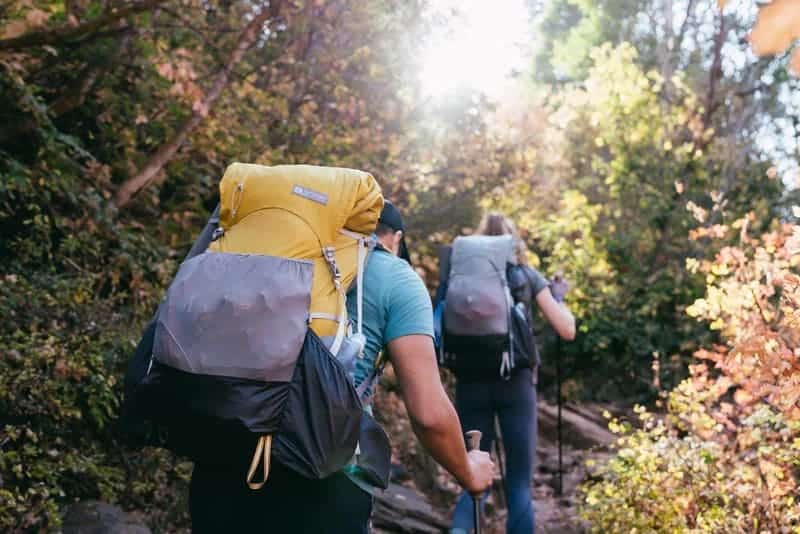
Items such as your backpack, tent, and sleeping bag are considered part of your backpacking base weight. If you want to reduce your base weight by purchasing lighter gear, you will most likely have to dig deeper into your pockets, but it may be a price worth paying for your comfort.
Sitting around camp and talking to other people is a great way to learn about their gear.
Since the lightest gear can also be the most expensive, you can slowly add lighter gear, investing in equipment over time and as your budget allows. Finding used gear is also a great way to build your kit within a budget.
The 4 essentials are the heaviest
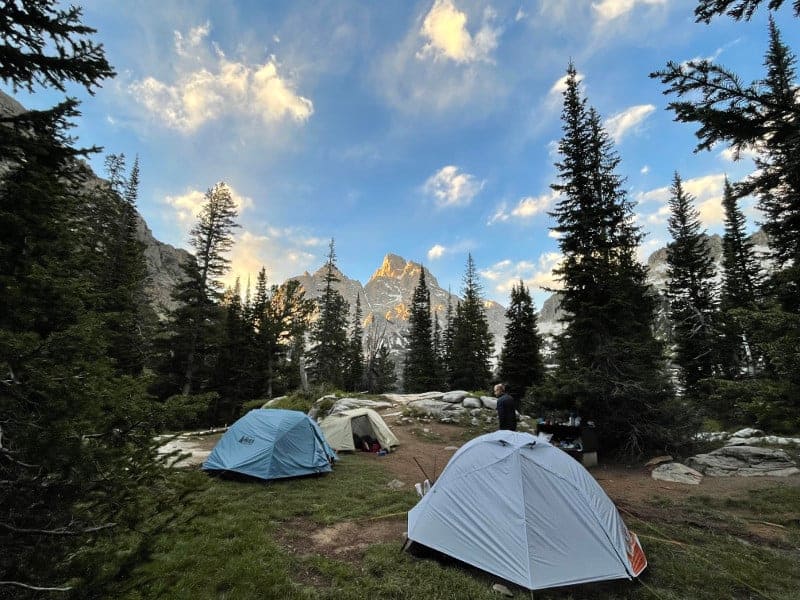
The things that weigh the most are also what we need the most. The shelter, such as a tent, will most likely be the heaviest item you’ll have to carry. Your backpack will not be far behind that. Sleeping gear, such as sleeping bags and sleeping mats, can be quite heavy. Last but not least, a survival water filter is a must-have for anyone heading into the wilderness, as water is the top priority for everyone.
It’s easy to become overwhelmed when you walk into a sports goods store, especially if you don’t know much about ultralight backpacking gear. The choices are endless.
1. Shelters
Carrying shelter, like a tent while backpacking or setting up a hunting camp, makes it easy to see that this is usually the heaviest of the big four.
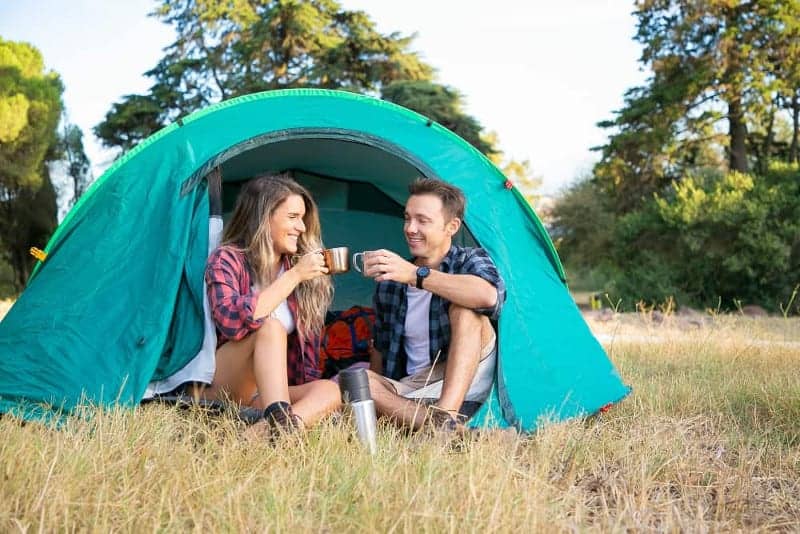
If you are an ultralight backpacker or a long distance thru-hiker, an ultralight tent is one of the simplest ways to cut weight and lighten your load. Ultralight tents are more comfortable to carry for long distances, although a slightly heavier tent usually means more durability.
Weight Specifications
Some manufacturers may exaggerate how light a tent is to make it seem more appealing. When looking into tents, it can be really confusing to see several different weight specifications listed. Unfortunately, there is no industry-wide standard for measuring tent weights, but here are some pointers to help you figure it out:
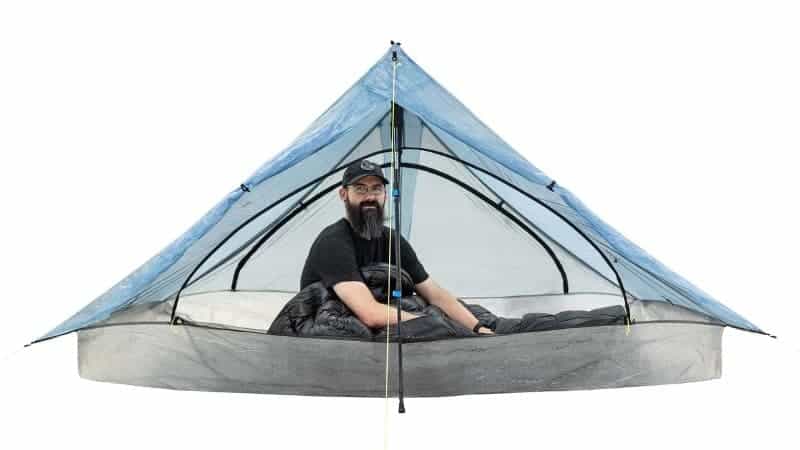
PACKAGED WEIGHT: Refers to the weight of all parts of the tent plus any accessories it comes with when you buy it. This is usually the most accurate measurement to consider.
MINIMUM TRAIL WEIGHT: This one’s trickier. The term “minimum trail weight” generally refers to only the components required to keep you dry. It will always include the tent body, the rainfly, and the poles. This measurement usually excludes tent stakes, guy lines, and stuff sacks.
Durability
The main trade-off with ultralight tents is that they’re built using thinner materials, which tend to be less durable than heavy-duty shelters. However, if handled carefully, ultralight tents can last for thousands of miles.
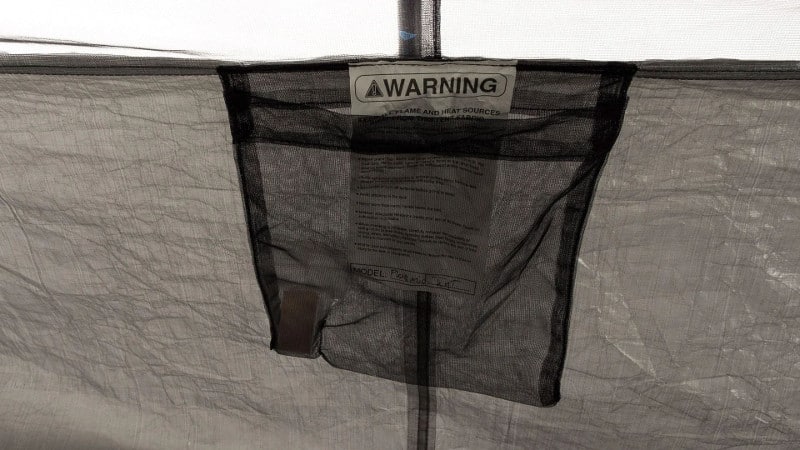
Season Rating
Three-season ultralight tents are the most popular and widely available. They’re made for spring, summer, and fall trips where you’ll need protection from bad weather. At the same time, they have to promote ventilation, which helps keep interior condensation to a minimum. Three-season tents can usually handle a little snow, but they’re not made for heavy snow and harsh winter conditions.
Non-freestanding tents
We use trekking poles, guylines, and stakes to install non-freestanding tents. Since there are no tent poles, they are lighter because of this, but they take more practice to get the hang of and require more time and space to set up.
In general, freestanding tents are preferred because they are quicker and simpler to install. They include a fixed pole setup that can be placed almost anywhere.
Ultralight Tents
ZPacks Duplex & Triplex
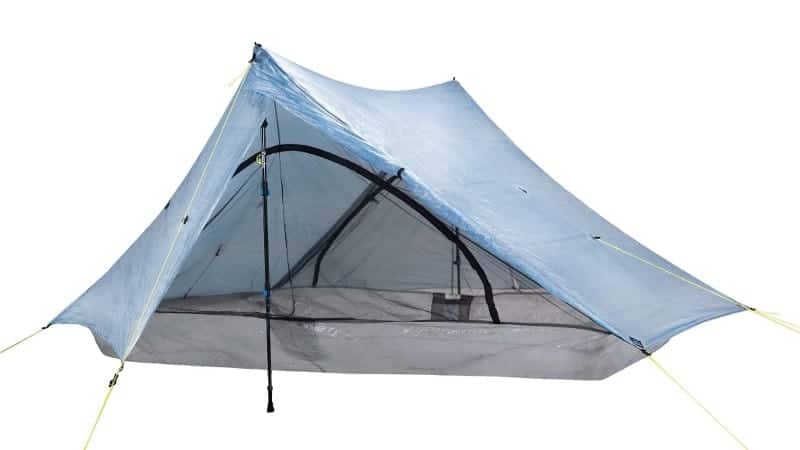
WEIGHT (Duplex): 1 lb. 7.7 oz.
DIMENSIONS (L x W x H): 90 x 45 x 48 in.
The ZPacks Duplex and Triplex offer a generous amount of interior space while remaining remarkably light because they are made of Dyneema® Composite Fabrics (DCF) material.
Lighter than Silnylon but stronger than Kevlar,the material’s unique properties allow for continual flex at stress points without compromising strength or structural integrity.
They are durable, fully waterproof, and don’t sag when wet. It’s our best ultralight backpacking tent for thru-hiking and fast and light journeys.
When hiking alone, we prefer the Duplex, and when hiking with a partner, we prefer the Triplex. The only drawback is that it is very expensive.
MSR Backpacking-Tents Carbon Reflex
MSR makes some of the lightest tents in the world.
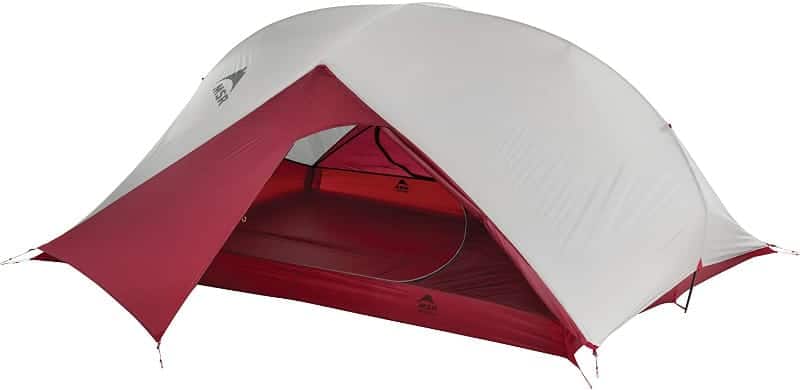
The MSR Carbon Reflex 1 is a double-wall solo tent that weighs 1 pound 9 ounces;
The Carbon Reflex 2 is designed for two people and comes in at 2 pounds, finally breaking the 3-pound barrier that many other companies have been having difficulties getting past.
Super Ultralight Alternative:
A simple tarp setup is all you need in a plow point or lean-to configuration. Try using a Silnylon poncho tarp, which serves as your rain gear/pack cover and shelter. It can be pitched in various ways using trekking poles, sticks, and standing trees.
T6ZERO Emergency Shelter System
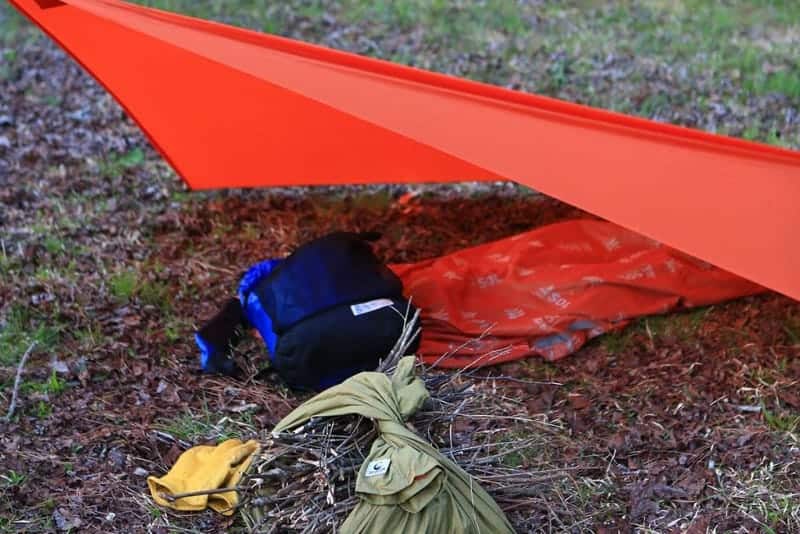
The Coalcracker Bushcraft T6ZERO tarp is made with a strong xenon fabric, weighs 5.7 ounces and comes with 2 tie-outs attached and a storage bag to make for a quick shelter setup when you need it— that’s hard to beat.
Although it is called an emergency shelter, it is perfect for someone looking to pack a lighter shelter or just camp in a more simplistic way.
2. BACKPACKS
The backpack is perhaps the most important piece of gear because it allows you to carry everything comfortably. Ultralight backpacking packs are lightweight by design while also balancing carrying comfort, durability, and organization.
Ultralight vs. Regular Backpacks
Most ultralight (UL) backpacks weigh less than 3 pounds, while most traditional backpacking packs range from 3 to 6 pounds.
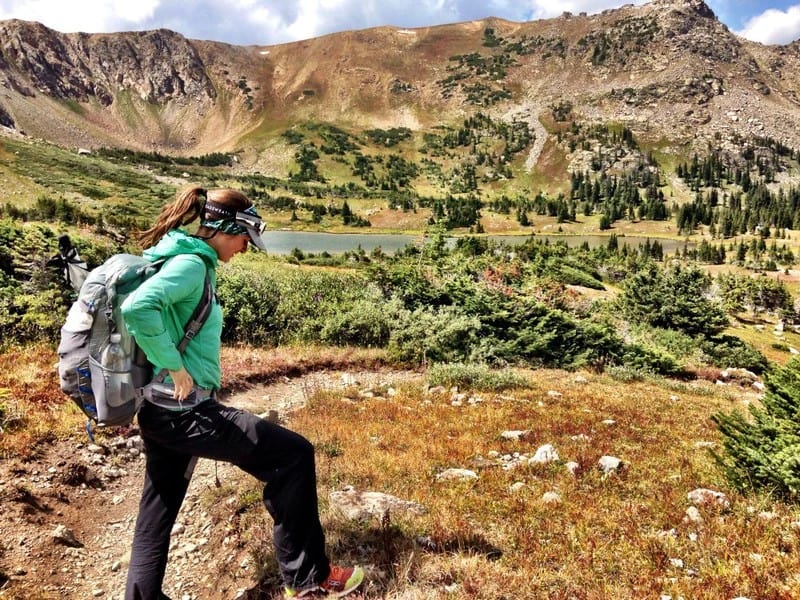
The heavier models are essentially traditional backpacking packs that have been pared down with thinner fabrics or fewer external pockets.
Around the two-pound mark, there are packs with fairly minimal organization and back-panel designs, but they still have internal frames, fully supportive hip-belts, and shoulder straps. For the majority of ultralight enthusiasts and thru-hikers, these are the category’s best choices and our top recommendation.
At the lightest end are frameless packs. As you might expect, uber-ultralight packs are the most compromised of the bunch. These are best reserved for experienced hikers who have perfected their ultralight gear.
Construction Materials and Durability
A great part of what allows ultralight packs to be built so lightweight is the development of new and innovative fabrics. Ultralight backpackers need their packs to be as light as possible, but this sometimes creates issues with durability and longevity.
Dyneema is generally the lightest fabric, has good abrasion resistance, and is waterproof. It’s also the most expensive.
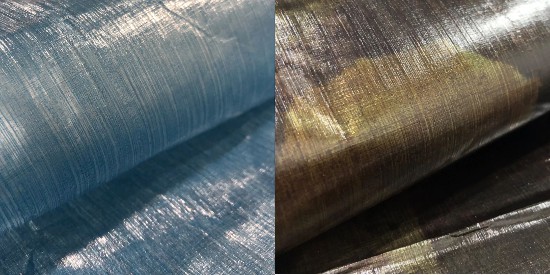
Nylon comes in many weights, labeled by denier (D), typically from 100-denier to 400-denier or more. It’s less durable but relatively inexpensive.
X-Pac offers good durability and affordability for the weight. It’s a compromise between the two.
Frame vs. Frameless Packs
Frameless packs are typically lighter and carry less weight and volume. If your primary concern is keeping weight down, then this is your choice.
Ultralight packs that have an internal frame can carry more weight, have larger capacities, and offer improved ventilation. The frame provides a load-bearing structure which distributes weight better, and if you have a high base weight, a pack with a frame will be more comfortable. Obviously, these kinds of packs are a bit heavier.
Pockets
Standard (and heavier) backpacking packs have features such as top lids, external pockets for organization, and straps to attach gear externally.
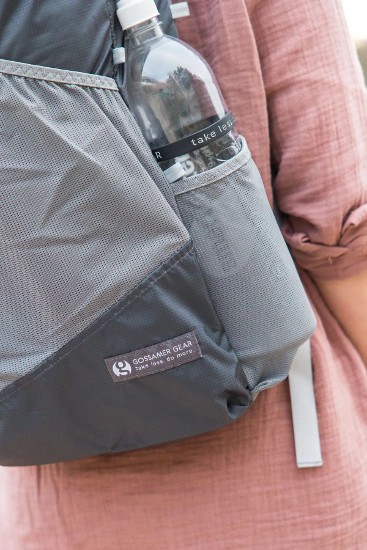
Ultralight packs are usually minimal in their organizational features. They have one large main compartment with external dump pockets on the sides and rear. Additionally, they might work with detachable parts like pockets on shoulder straps and hip-belts.
Closure System
Most ultralight packs will feature a roll-top closure in order to reduce weight. Roll-tops provide weather resistance and expandable capacity. Cinch-top closures (drawcords) are less common, but they are easier to use, and they are typically used in conjunction with top lids.
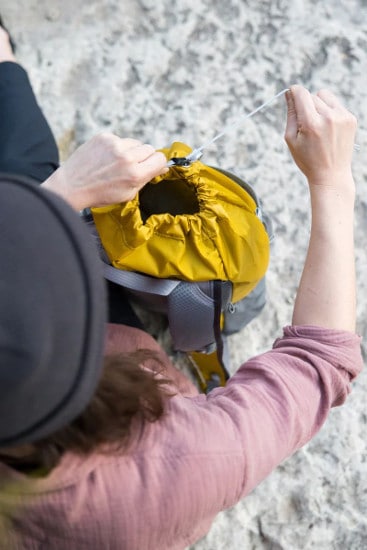
Backpanel Padding
Most ultralight packs have simplified designs with a minimal amount of foam or padded mesh backpanel, as opposed to the bulkier and highly padded backpanels on traditional backpacks.
Ultralight backpacking packs
In the world of today’s backpacks, there are so many options that even most gear fanatics have trouble keeping up with the ever-changing models and trends.
Granite Gear’s Virga
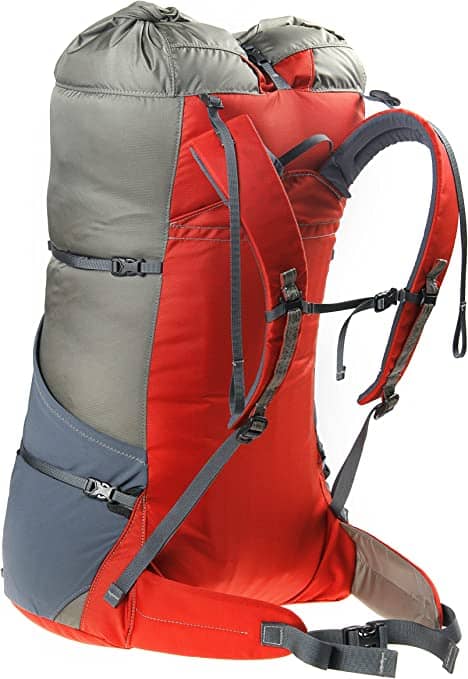
Granite Gear’s Virga is a rugged, lightweight pack that weighs 1 pound 3 ounces and has a volume of 3,200 cubic inches. It can hold 20 pounds comfortably.
It has a suspension system with a sternum strap and hip belt commonly found on much heavier packs, and it can be mistreated if you are rough with your gear.
Virga 2: The updated version of this classic of the ultralight pack world now weighs just over a pound (1 lb. 3 oz.) and features redesigned shoulder straps, a true roll-top closure, and a padded hip belt for enhanced comfort on the trail.
Super Ultralight Alternatives:
Gossamer Gear Murmur 36 Hyperlight (7.9 ounces)
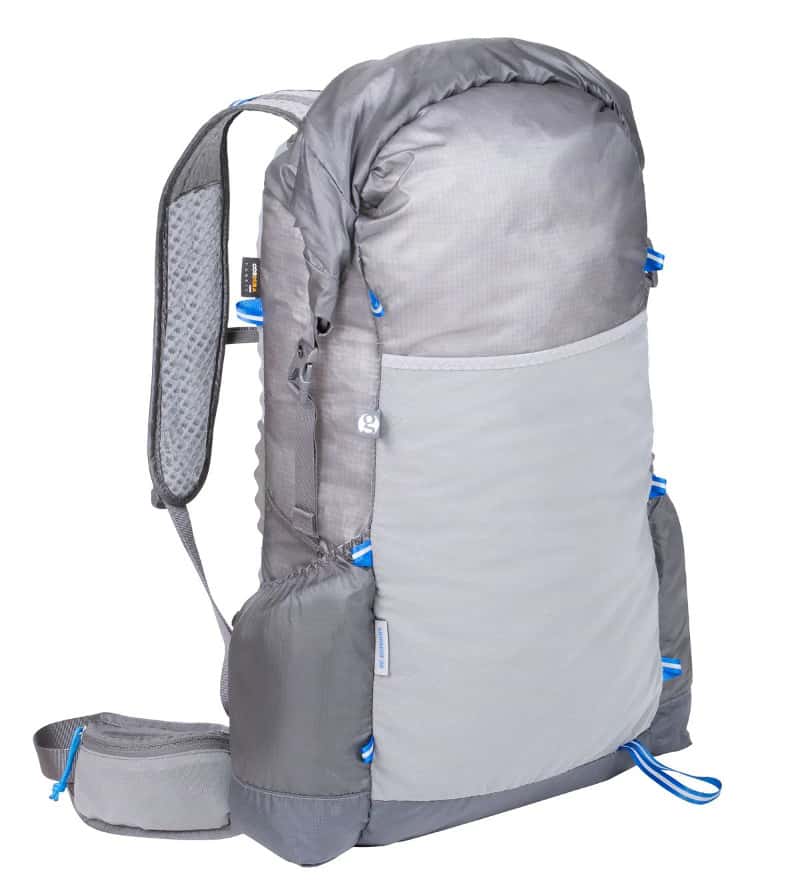
The Gossamer Gear Murmur Backpack is made of Spinnaker material and can handle everything the wilderness can throw at it. If you remove the extra straps, side pockets, and sleeping pad mesh pockets, you can get a weight of 5 ounces, suitable for a base weight of under 4 pounds!
This incredibly light pack, made of 30 & 70 denier fabrics, is perfect for a weekend ascent of Mt. Humphreys in the Sierra or a solo trip up Exum Ridge. If you can weigh in your gear at around 15 pounds or less, this is your pack.
Gossamer Gear Minimalist 19 Daypack
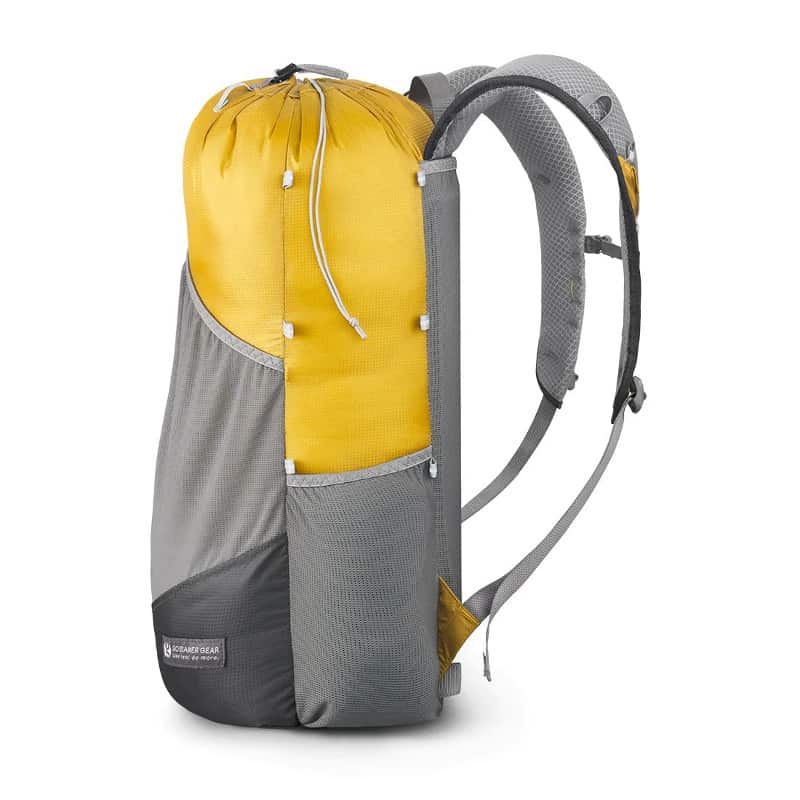
Another fine option is the Minimalist 19 (11 ounces), which combines an awesome space/weight ratio and comfortable durability. This is ideal for your ultralight backpacking adventures in the mountains.
3. SLEEPING GEAR
Getting adequate sleep is important if you want to have a great day on the trail. Waking up feeling refreshed and ready to tackle some miles sure beats dragging yourself out of your tent after tossing and turning all night. That’s why the type of sleeping bag you choose will weigh heavily on the season.
As one of the biggest items in your pack, your sleeping bag needs to be compressible and lightweight while providing sufficient warmth and comfort for a good night’s sleep outdoors.
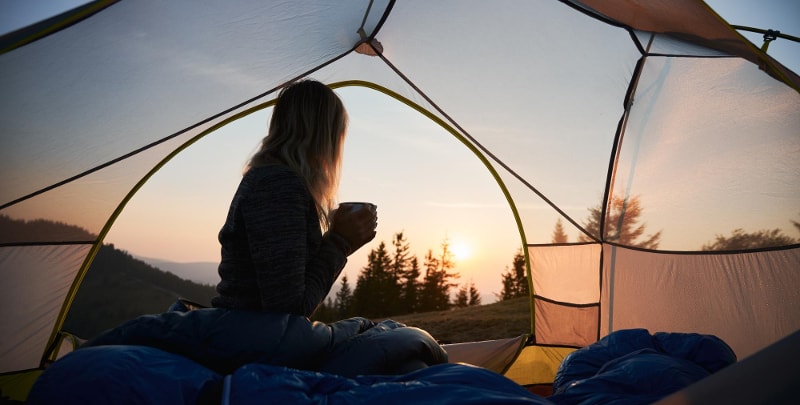
Sleeping bags vs. backpacking quilts.
Ultralight sleeping bags and quilts are specifically designed for weight- and space- conscious backpackers, thru-hikers, alpinists, and bikepackers.
There has been a lot of innovation in lightweight gear as ultralight backpacking has grown in popularity.
Sleeping bags differ from backpacking quilts in one significant way: they wrap fully around and enclose your body, whereas quilts generally cover only your top and sides.
Because they provide wraparound protection, sleeping bags are generally a bit warmer than quilts, but they’re also slightly heavier. Mummy bags are typically the best option for outdoor activities in cold weather when you need to be able to cinch your bag closed and block drafts.
Goose down vs. synthetic fill bags.
Goose down is known for its lightweight and unparalleled comfort and warmth. However, when goose down gets wet, it becomes a sopping wet sack that gives you zero warmth.
If you plan to visit humid or wet areas, look for down insulation that has been treated to resist light moisture. Hydrophobic down, also known as water-repellent down, dries out quicker than untreated down and stays lofty even when wet. Hydrophobic down adds a good dose of extra security.

(In addition, look for shell fabrics that have been treated with a durable water repellant (DWR) finish and a waterproof compression sack, which add extra protection for wet or snowy environments).
On the other hand, today’s synthetic fills have almost perfectly matched their counterparts in weight and warmth. Plus, they have another advantage: synthetic fill can be wet, still provide warmth and dry quickly to a certain level.
Still, in the ultralight category, down is by far the superior insulator, beating out synthetic fill both in warmth-to-weight ratio and compressibility.
Ultralight Sleeping Bags
There is not enough space in this article to name all the different brands of sleeping bags and why you should or should not use them. Instead, let’s name a couple people use with great success.
Feathered Friends Hummingbird UL 30
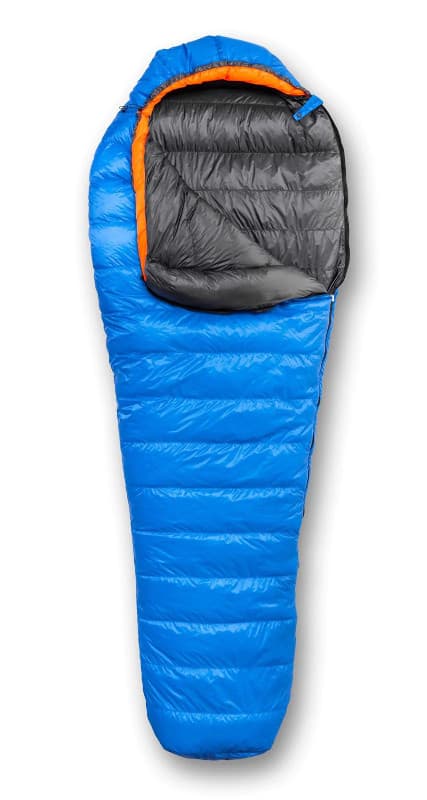
Temperature rating: 30°F
Weight: 1 lb. 5.3 oz.
The hummingbird UL 30 is a top-notch sleeping bag for serious outdoors people, extremely well-built (this Seattle-based down specialist uses premium materials) and warmer than the temperature rating suggests.
For 3-season use, this ultralight sleeping bag is stuffed with a generous 11.5 ounces of 950-fill goose down, has a thin but water-resistant 10-denier Pertex Endurance shell, and comes in at just 1 pound, 5.3 ounces for the 30-degree version.
Note: Check out the Feathered Friends Swallow and Swift, two similarly sized bags with a little bit more room to move around in.
Western Mountaineering UltraLite
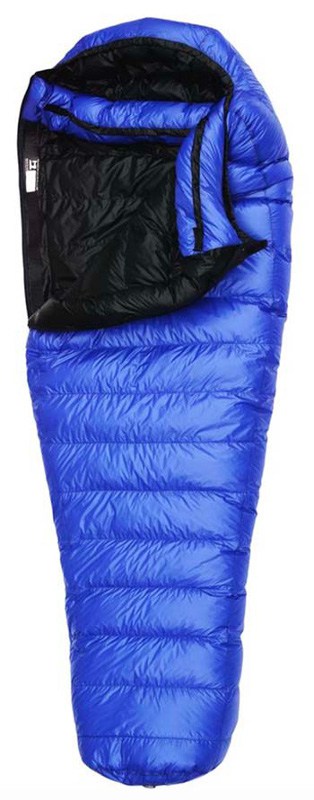
Weight: 1 lb. 13 oz.
Temperature rating: 20°F
The biggest competitor to the 20-degree version of the Feathered Friends Hummingbird UL is the Western Mountaineering UltraLite. The UltraLite has a higher fill weight, although the Hummingbird uses ultra-lofty 950-fill-power down that offsets some of that difference.
This bag may be overkill for warm weather and low elevations, but it provides more security for mountain environments and shoulder seasons when temperatures can really drop.

With 16 ounces of 850-fill down and a 20°F temperature rating, it’s much more alpine-centric. You also get a plush draft collar, hood, continuous baffles, and a respectable weight of less than 2 pounds.
Western Mountaineering’s Alpinlite, which adds 5 inches at the shoulders and 4 inches at the hips, is a good option if you need a little more space.
Super Ultralight Alternative:
Western Mountaineering NanoLite
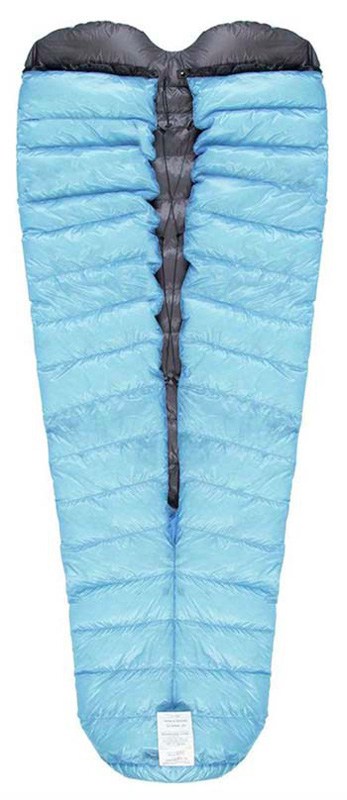
Weight: 13.3 oz.
Temperature rating: 38˚F
Thru-hikers and diehard ultra-lighters are always looking for ways to shave ounces. A backpacker’s quilt is lighter than any sleeping bag. A quilt removes the hood and back of a conventional mummy bag and is used in conjunction with a sleeping pad (attached with ties or straps) to provide insulation on all sides.
The NanoLite is an extremely lightweight (13.3 oz.) but low on down fill (6.5 oz. of 850-fill down) backpacking quilt. It is more appropriate for warm temperatures and low elevations (thru-hiking the Appalachian Trail or bikepacking near sea level), and unlike lightweight sleeping bags, it allows much more versatility.
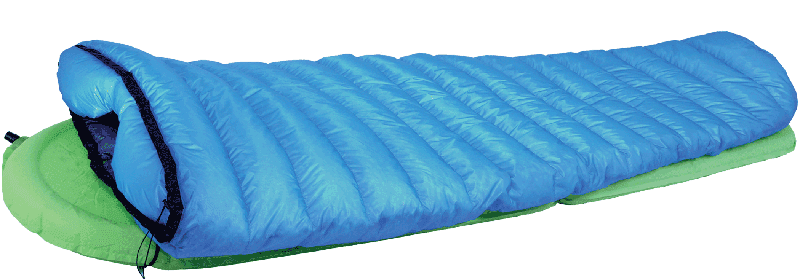
On warm nights, drape it across your body, or cinch the back all the way up when the temperature drops. You can use a layering system consisting of any extra clothes you may have on you, like a beanie and light fleece top, to expand the rating of your sleep system.
It has a generous shoulder girth of 68 inches (allowing it to wrap all the way around your body), along with an insulated draft collar.
Since Western Mountaineering has been producing some of the best ultralight sleeping bags for years, we were thrilled when they added quilts to their product line.
The main drawback is that it is somewhat expensive; $355 is a fairly steep price to pay for such a limited temperature range.
4. WATER FILTERS
Water is always more important than food in our outdoor adventures. The use of water filters or tablets to purify water has been the subject of continuing discussions.
You can’t get any lighter than tablets (chlorine or iodine). Tablets are the best way to cut weight and drink safely anywhere in the world. Many people, however, dislike the taste of chemically treated water or the idea of using it so frequently, not to mention the amount of time required for the purification process to complete. Sometimes it takes up to 30 minutes before water is safe for drinking.
Miniwell L630 Portable Water Filter
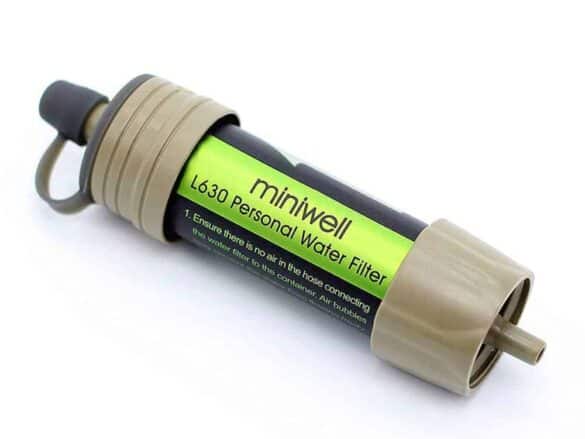
Miniwell offers the Miniwell L630 Portable Filtration System that turns murky water into crisp and clear drinking water instantaneously.
With a 0.1 micron ultra-filtration membrane, 99.99% of waterborne bacteria (E. coli, Staphylococcus Aureus, Salmonella Typhi, Cholera bacteria, Legionella) and parasites will be removed, which means that you can drink water from a river or a lake without having to worry about microbes. It takes up very little space and weighs only 1.4 ounces.
Super Ultralight Alternatives:
Water purification tablets, bleach drops, or boiling
Bleach and water purification tablets eliminate dangerous microorganisms in water, but they do not get rid of toxins or other dangers like radioactive particles. For this, a water purification filter is better. Cooking water for around ten minutes will also kill microorganisms in the water.
See all the different ways to purify water in survival emergencies.
Take Less Do More
Get out and try a few of these options. Changing even one of the Big Four can lighten your load and make a tough outing more enjoyable. Your body will appreciate it.
